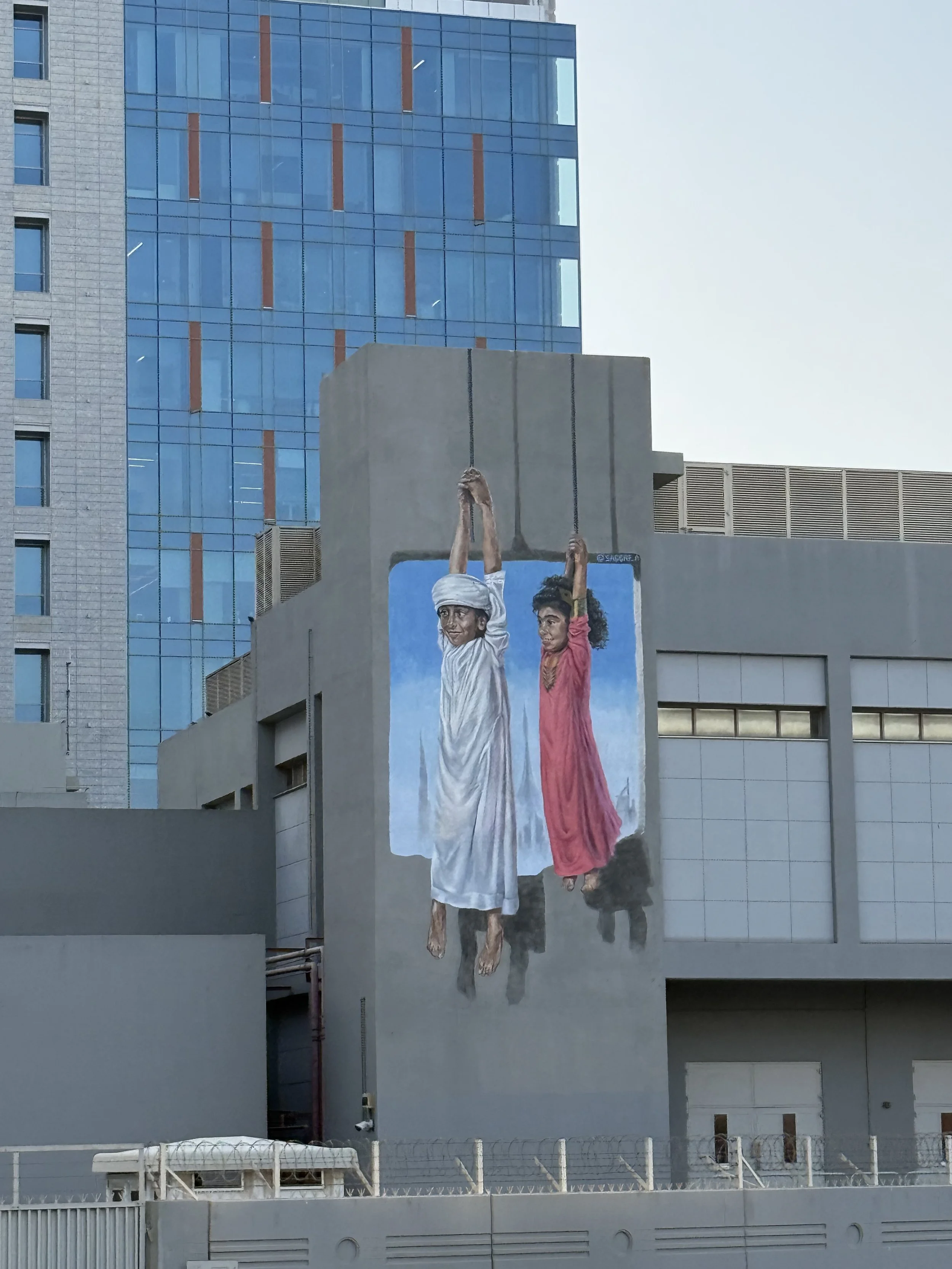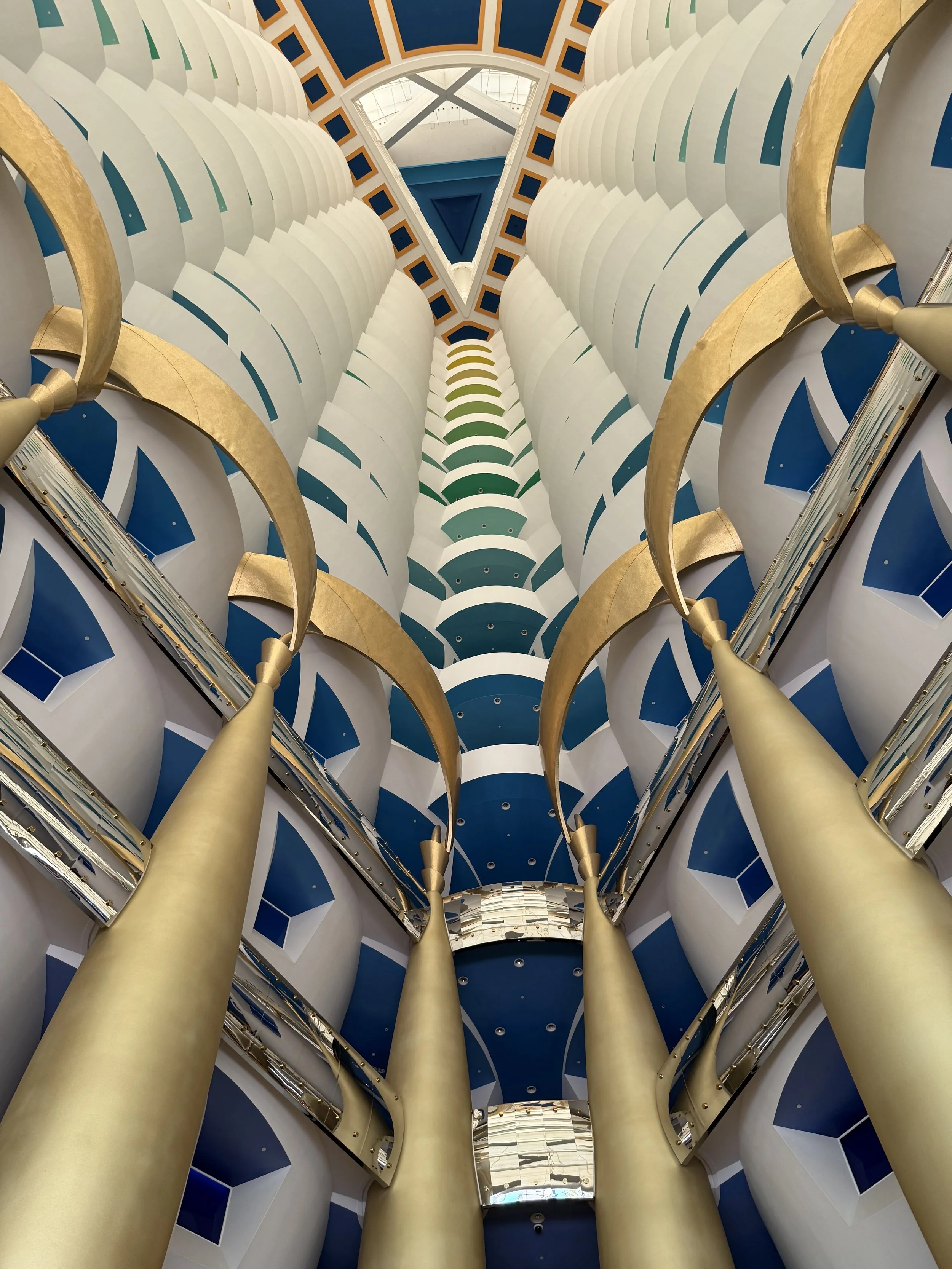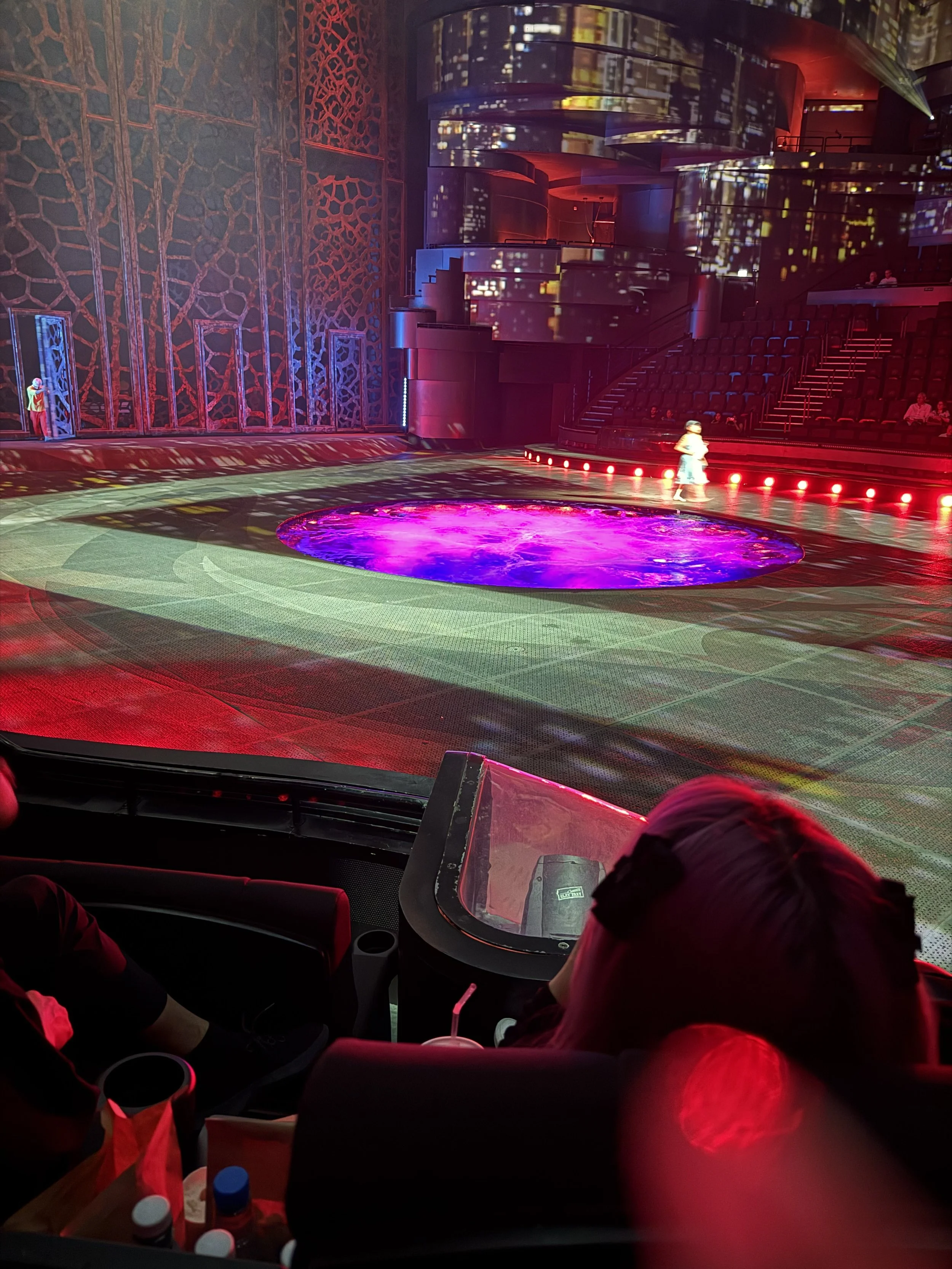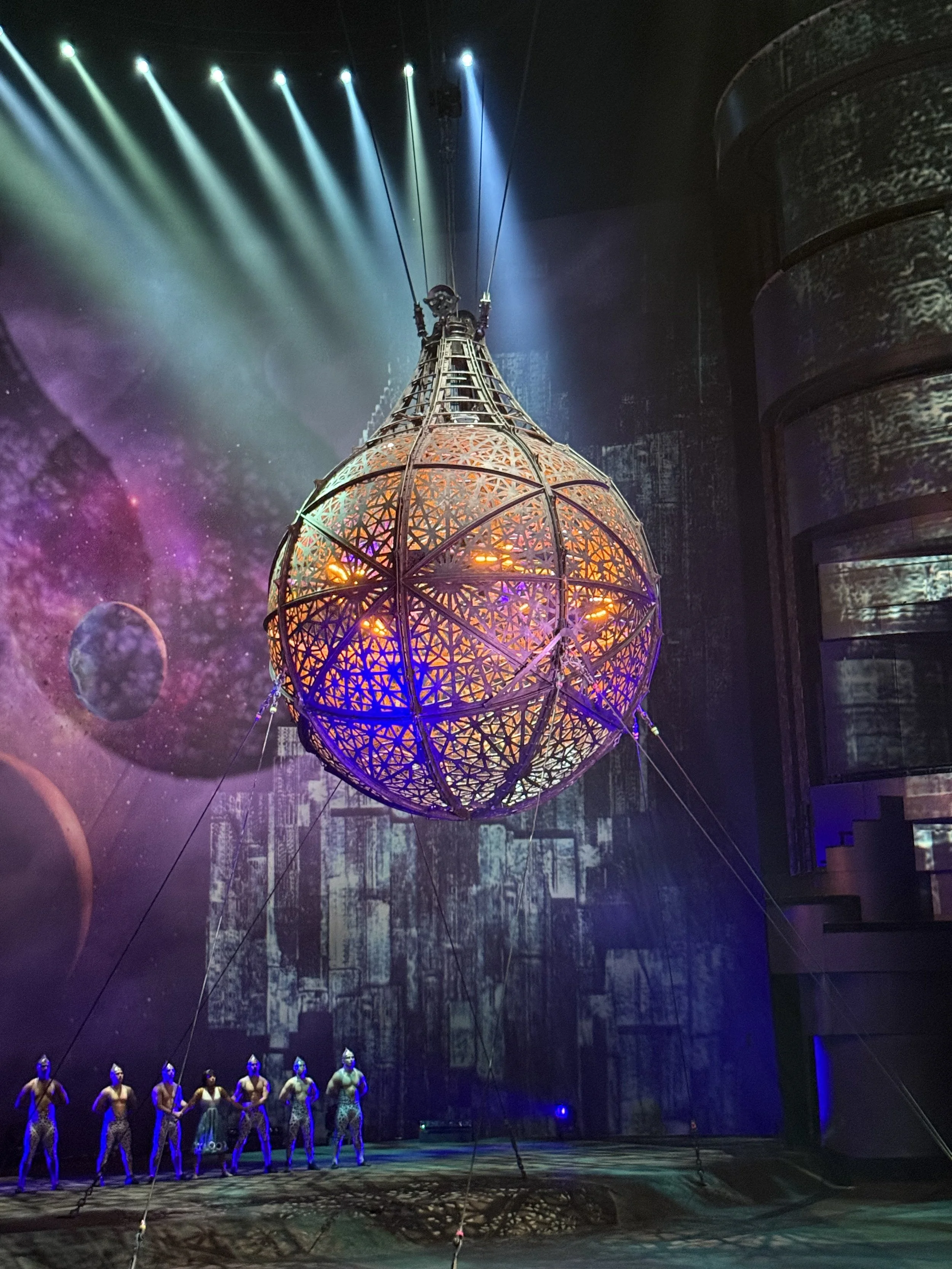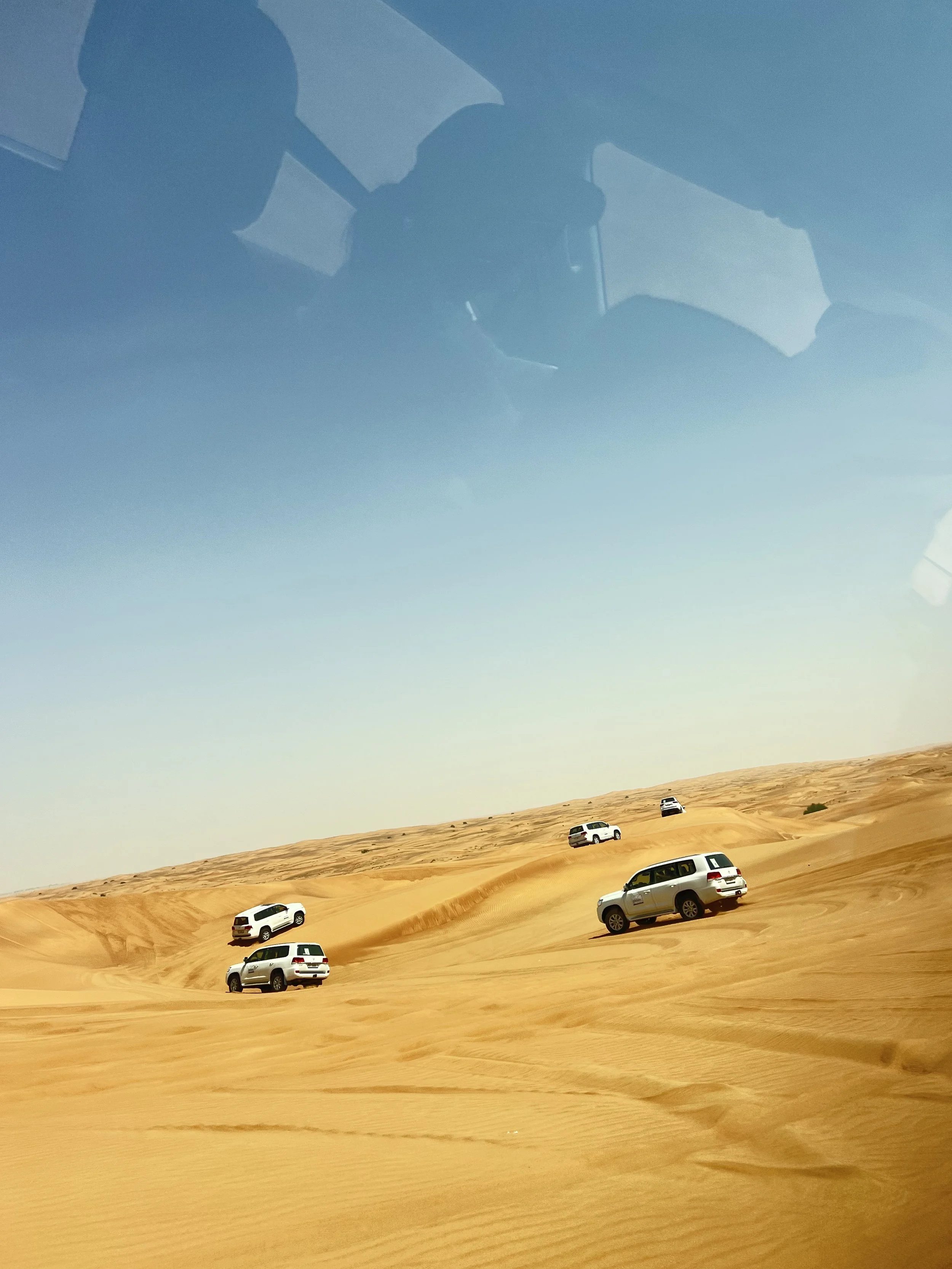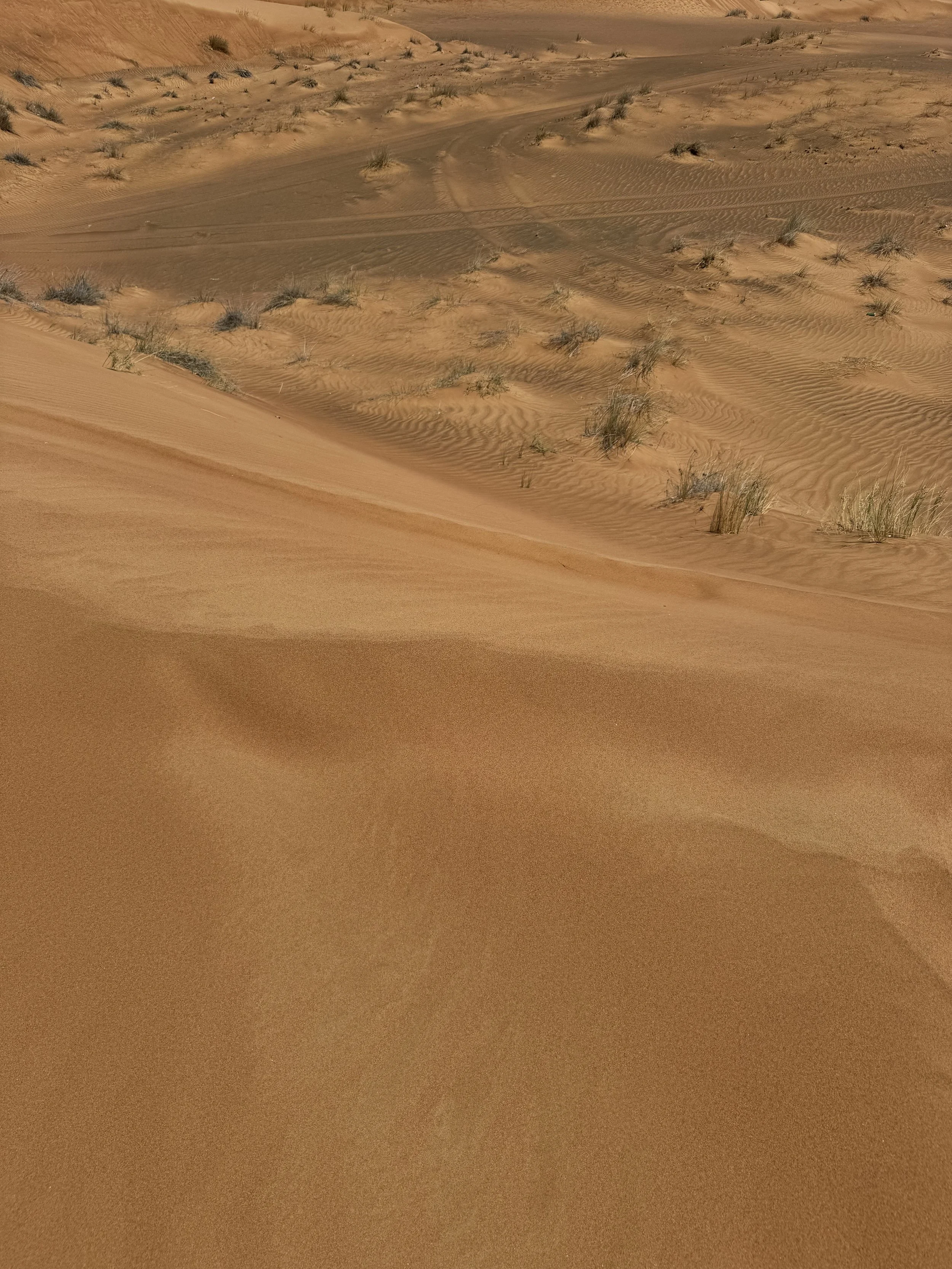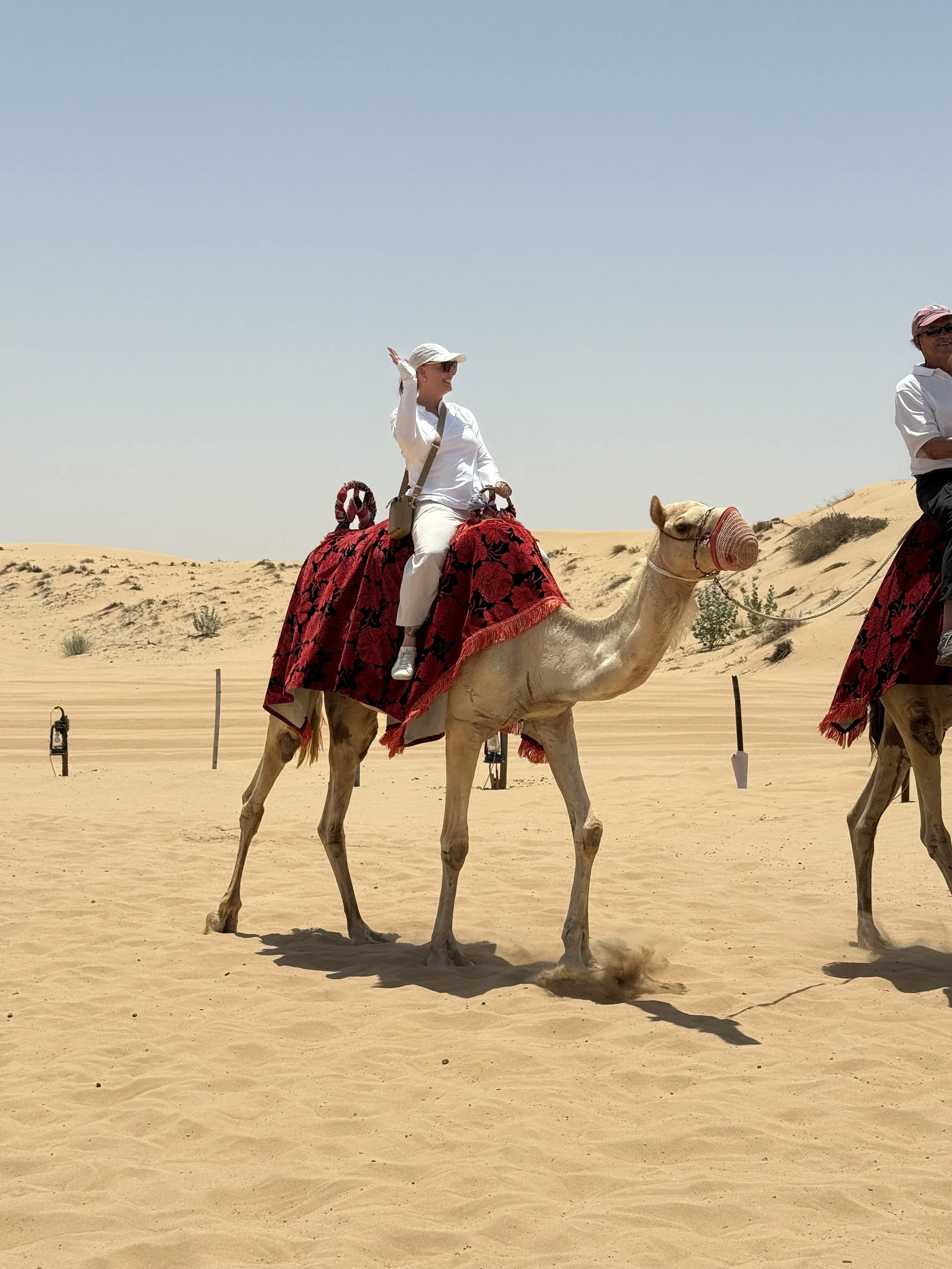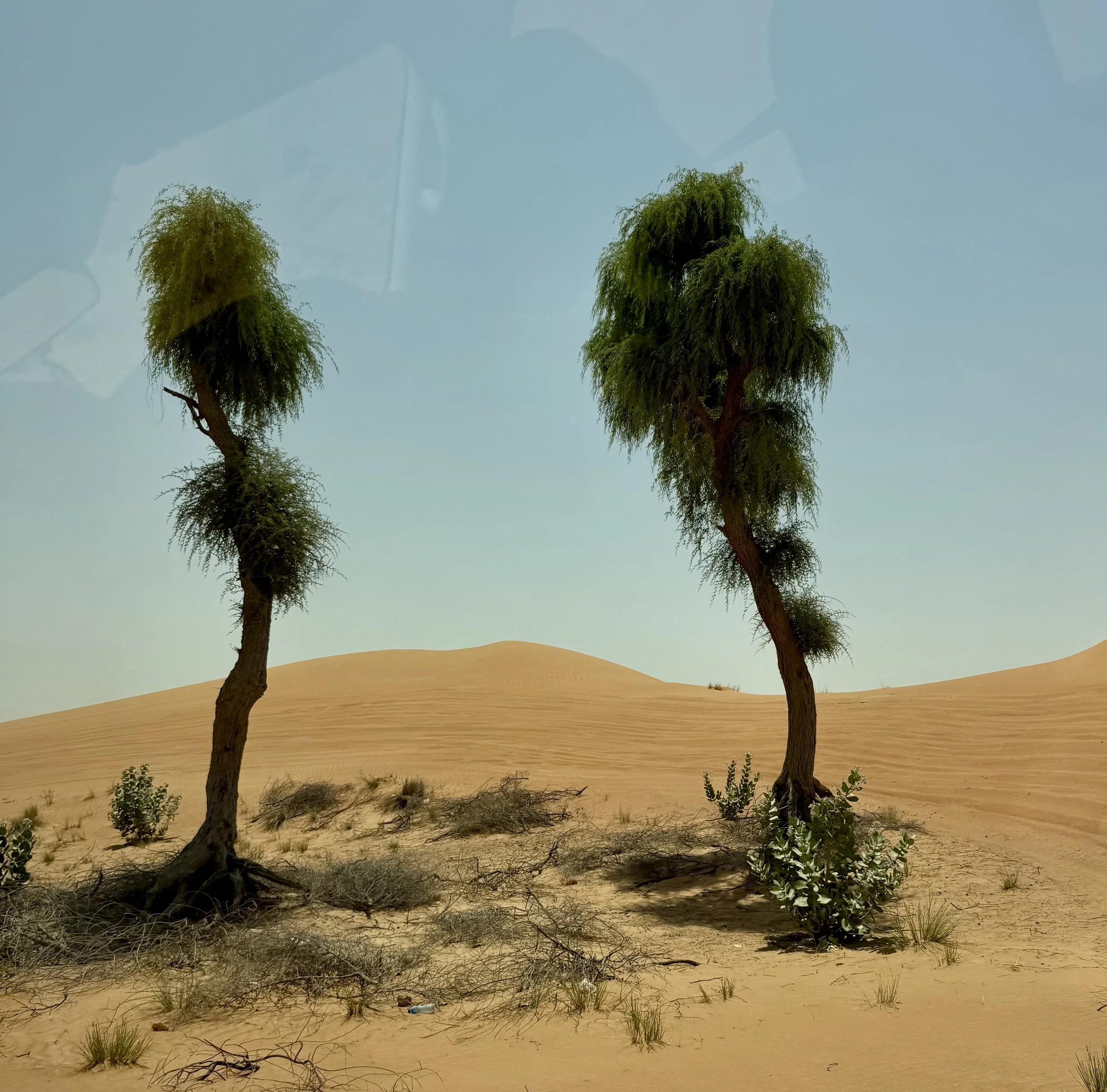Dubai: Dunes, Drama, and Dazzling Design
After three fast-paced days in India, we landed in a totally different universe: Dubai. A city of superlatives, extremes, and contradictions. It's hard to believe this shimmering metropolis in the desert was once a sleepy fishing village. Today? It's all glitz, steel, and luxury—but for all its shine, the city seems to lack a deeper soul.
Day 1: Hop-On, Hop-Off & A City Divided
We kicked things off with a hop-on hop-off bus tour, and—being brave or maybe just a little foolish—we sat on the open top deck. Luckily there was a cover overhead, but wow, it was HOT. Like, “drink-an-entire-bottle-of-water-before-10am” hot.
The city’s architecture was the standout: tall, shiny, and uniquely shaped buildings dot the skyline like a futuristic Lego set. The Museum of the Future was the crown jewel—an oval-shaped structure meant to represent the human eye, covered in poetry written in Arabic calligraphy. We didn’t go inside (this time), but even from the outside it was breathtaking.
The tour gave us a great overview, taking us from modern Dubai—all skyscrapers and mega malls—to Old Dubai, where traditional souks sell spices, perfumes, and tons of gold. The contrast is stark, and the symbolic Dubai Frameliterally draws the line between the old and new city. Two hours well spent, even if we melted a bit.
Day 2: Sail-Shaped Hotels & Cirque-Style Spectacle
Our second day was all about luxury. We visited the iconic Burj Al Arab Jumeirah, the sail-shaped hotel that once held the title of tallest in Dubai (until it was dethroned by the record-shattering Burj Khalifa).
The lobby was jaw-dropping: think waterfalls designed by the same folks who worked on The Mirage in Las Vegas, towering columns, and an impossibly high domed ceiling.
We took the elevator to the top for a high tea experience with panoramic views and delicious bites. Luxurious, leisurely, and totally worth it.
Afterward, we stopped by the Souk Madinat Jumeirah, a gorgeous shopping center designed like a traditional Arab marketplace. We picked up some Dubai chocolates and a couple of plush camels—yes, we’re those tourists.
That evening, we went to see "Perle" by Dragone, a Las Vegas-style water show that had Cirque du Soleil vibes with an Emirati twist. The poetic storyline traced Dubai’s pearl-diving past, using a mix of acrobatics, motorcycles, and a dazzling water stage. At one point the theater transformed into six separate waterfalls—it was magical and surreal, like watching dreams made real.
Day 3: Sand Dunes & Solo Adventures
Mike took the day off to recover from all the sparkle, but I (Jenny) wasn’t about to miss the desert safari. The experience, called "dune bashing," involved being whipped around in a luxury Land Cruiser over sand dunes. It was wild, like off-roading on a roller coaster.
We stopped for a snack at a desert camp, where I got to do something totally bucket-list-worthy: ride a camel. Let’s just say mounting and dismounting a camel is not the most graceful process, but now I can officially check it off the list.
Did I mention it was hot? Like “your-shoes-might-melt” hot.
Dubai’s Glitzy Shell and Political Core
Beyond the malls, skyscrapers, and luxury hotels, Dubai’s geopolitical setup is... unique. It’s part of the United Arab Emirates (UAE), a federation of seven emirates. Dubai and Abu Dhabi are the most well-known. The entire system is run by Sheikh Mohammed bin Rashid Al Maktoum, an autocratic leader who essentially built modern Dubai out of the desert using oil wealth and visionary (or authoritarian, depending on your angle) ambition.
Quick note on names: in Arabic, "bin" means "son of," and "al" means "of the tribe." So your name reflects your given name, your father’s name, and your tribal affiliation.
Historically, Dubai was home to fishermen, pearl divers, and traders, with no central government until oil money transformed everything. Today, the city is a place of extremes: 92% of the population are immigrants or guest workers, most of whom must leave the country by age 65. It’s possible to apply for citizenship after 30 years, but that’s more of a suggestion than a guarantee.
That dynamic made it difficult to get a true sense of the “soul” of Dubai. Everyone we met was polite, fluent in English, and helpful—but the interactions felt transactional. I didn’t pick up on any sense of national pride or local identity. It felt like a city designed for tourism and business, not a place with deep communal roots. Kind of like the Las Vegas Strip, but cleaner, richer, and with fewer Elvis impersonators.
We saw no homelessness or poverty—possibly because it’s not allowed. You get the sense that everything here runs on strict control. No protests, no elections, no dissent. Just glossy surfaces and portraits of the Sheikh everywhere, like a quiet reminder of who’s in charge.
Final Thoughts
Dubai is a city of spectacle: incredible architecture, pristine streets, luxury at every turn. It’s efficient, safe, and designed to impress. But for us, it felt a little... hollow.
We didn’t leave with a deeper understanding of the culture or community. It was dazzling, yes, but emotionally distant. A place that looks like the future but feels like it’s missing a heartbeat.
Would we return? Maybe. There’s still more to see and do. But we left wondering what life is really like for the people who live here—and unsure we got anywhere close to the answer.
Dubai: You amazed us, confused us, and left us curious for more.



